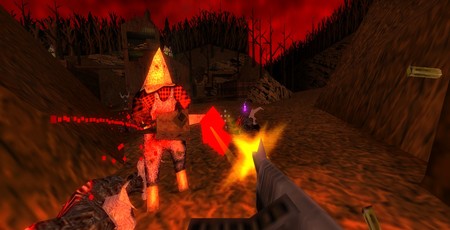
Price: £15.00
Developer: David Szymanski
Publisher: New Blood Interactive
Platform(s): PC
One should generally be wary of entertainment that peddles nostalgia, because there’s a difference between a game that’s enjoyable for its own worth, and a game that’s enjoyable because it reminds you of something else. But that doesn’t means that games which look backward have zero value. At their best, such games can remind us of mechanical ideas and artistic styles that have been left behind by the march of progress.
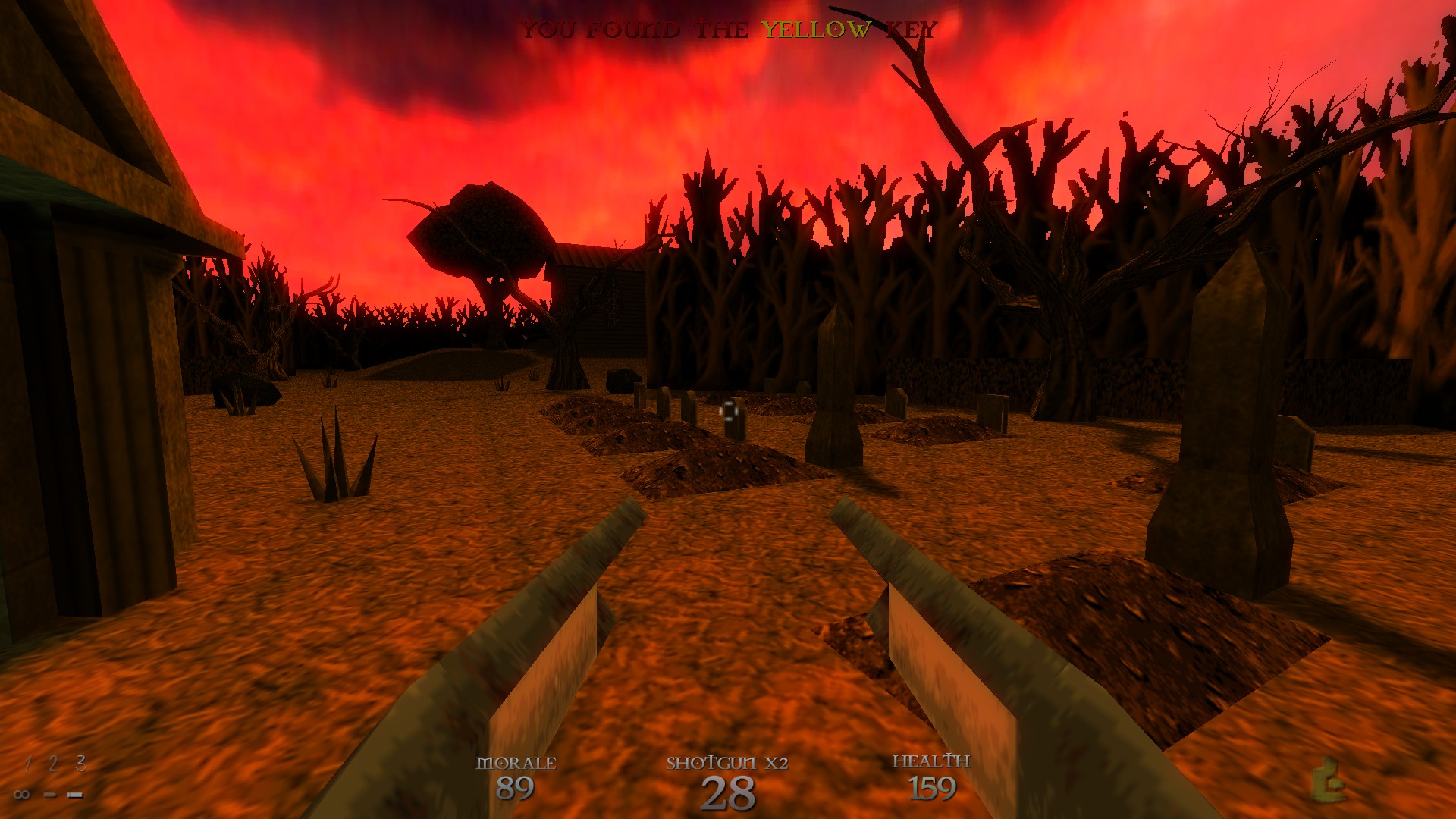
Dusk is absolutely one of those games. Far from being just a fun throwback, this classically inspired FPS is vitally relevant to a modern audience. It markets itself as a love-letter to the 90s FPS, and with its blistering pace and lashings of pixelated gibs it certainly achieves that. But where Dusk’s greatness lies is as a love-letter to 3D level design. This is a game that plays with space and perspective in a way that, outside of Dishonored, hasn’t been seen since Thief, a game that expresses its love for classic shooters through the majesty of its geometry as much as the sound of its guns.
Admittedly, it takes a while for Dusk’s ambition to show. Like Doom, Dusk’s campaign is split into three separate episodes, with its Early Access development having mimicked the shareware release of Id’s genre-defining FPS. Each of these episodes is split into 10 levels. There’s also an additional secret level in each episode, Dusk’s fondness for secrets being one of many tributes it makes to shooters of yore.
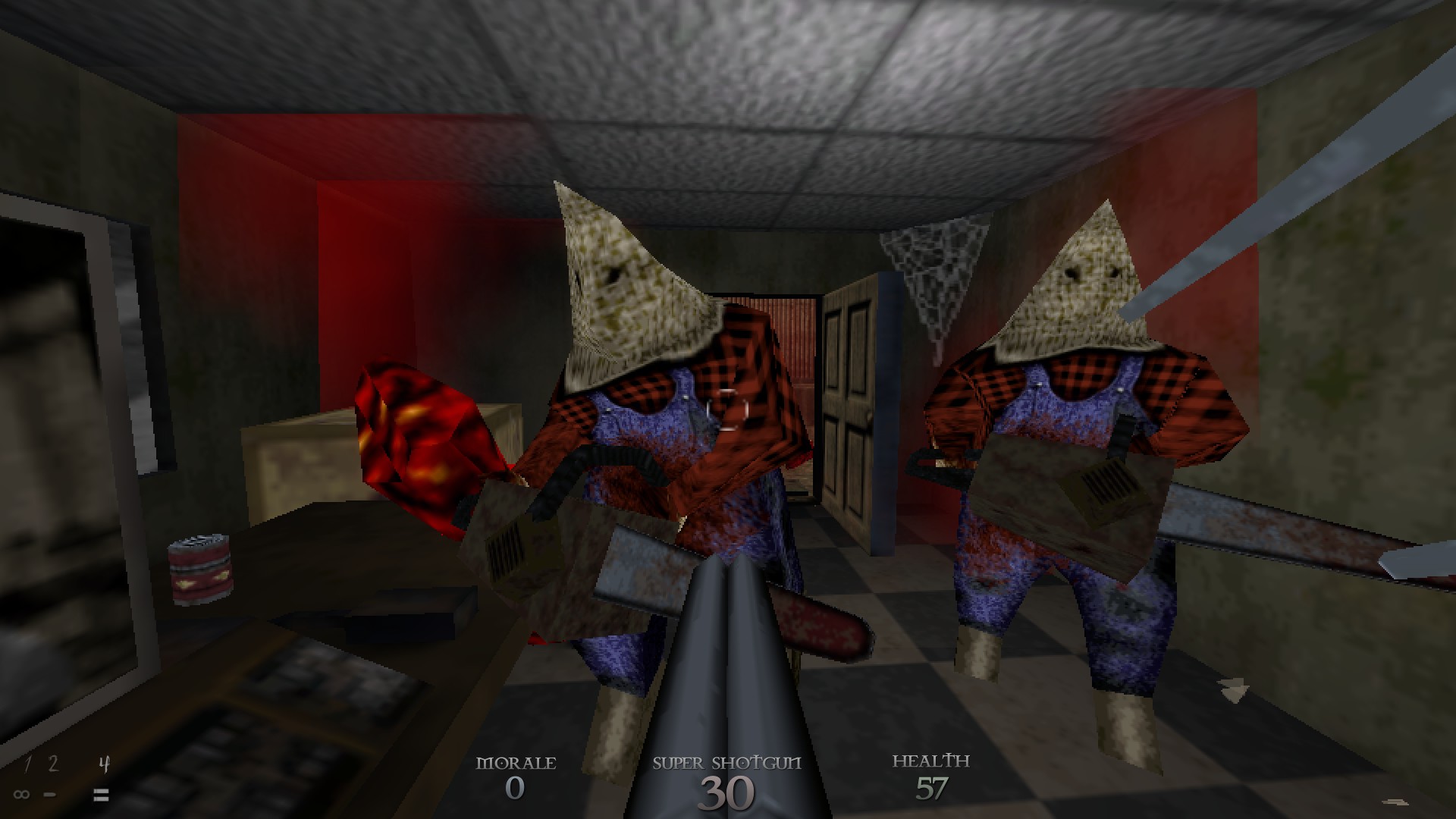
The first episode serves mainly to establish Dusk’s style and tone, while giving you a chance to familiarise yourself with the game’s pace and intensity. Beginning as a backwoods horror FPS, you spawn in a farmhouse basement wielding a pair of sickles while three chainsaw-wielding, sackcloth-hooded fellows attempt to carve you up for breakfast. From there, Dusk follows a fairly typical FPS path, with you acquiring an increasingly powerful number of guns to fire at increasingly powerful and numerous opponents.
Dusk does a wonderful job mimicking the grungy, aliased aesthetic of those early 3D shooters. Buildings are constructed from simple geometric shapes, and terrain is generated through BSP’d polygons. Meanwhile, enemy models look as if they were beaten into shape with a hammer, all sharing a delightfully jagged and lumpen design. There are some techniques, such as physics for objects like barrels and crates and bloom-lighting for sunlight, but the deployment of these is very restrained.
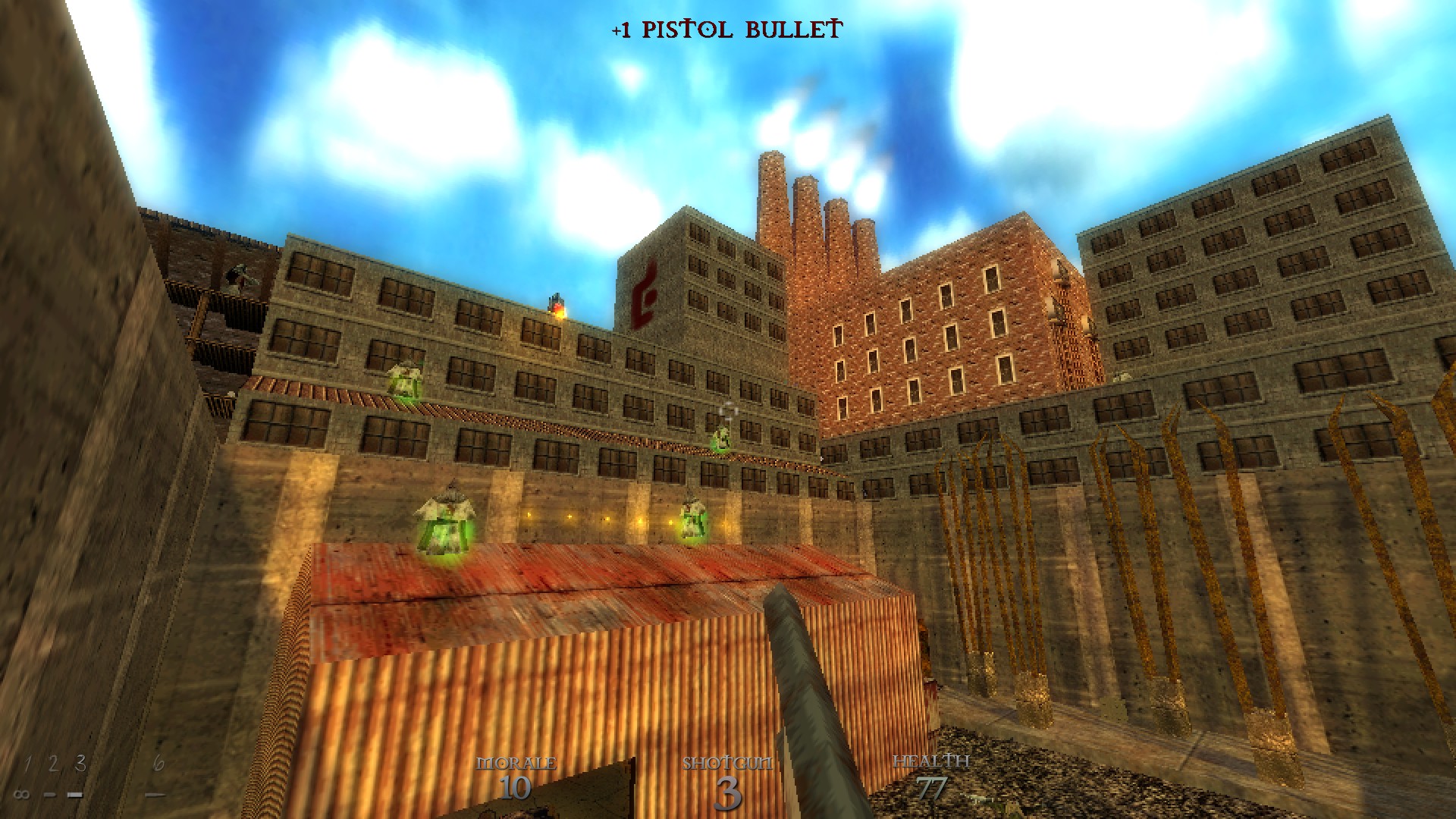
It works superbly as a stylistic choice, although credit should go to Szymanski for how artfully it is deployed, using different colour schemes and architectural styles to make each level feel varied and distinct. A chapel on a hill is silhouetted against a blood-red sunset. The borders of the world are textured as blocky, twisted trees. Indeed, the deliberately wonky-looking world and enemy models serve only to heighten the game’s horror elements. Dusk is designed to be tense and atmospheric rather than terrifying, although there are moments when the game descends into true horror, with a couple of levels that feel like they’ve leapt from the pages of a Clive Barker novel.
As an FPS, Dusk is beautifully paced, with slick movement and satisfying weaponry. There’s more to it than simple run and gun, however. Each weapon is useful against a particular enemy or set of enemies. The crossbow, for example, fires a spiritual bolt through both walls and enemies making it handy for dispatching groups of opponents and conserving ammunition. My favourite weapon is probably the hunting rifle, which is the closest Dusk gets to a railgun. It cracks like a whip and does huge damage to enemies. You can zoom in with it by pressing the right mouse, but it’s even more fun to fire from the hip, dropping an enemy with a single well-timed shot.
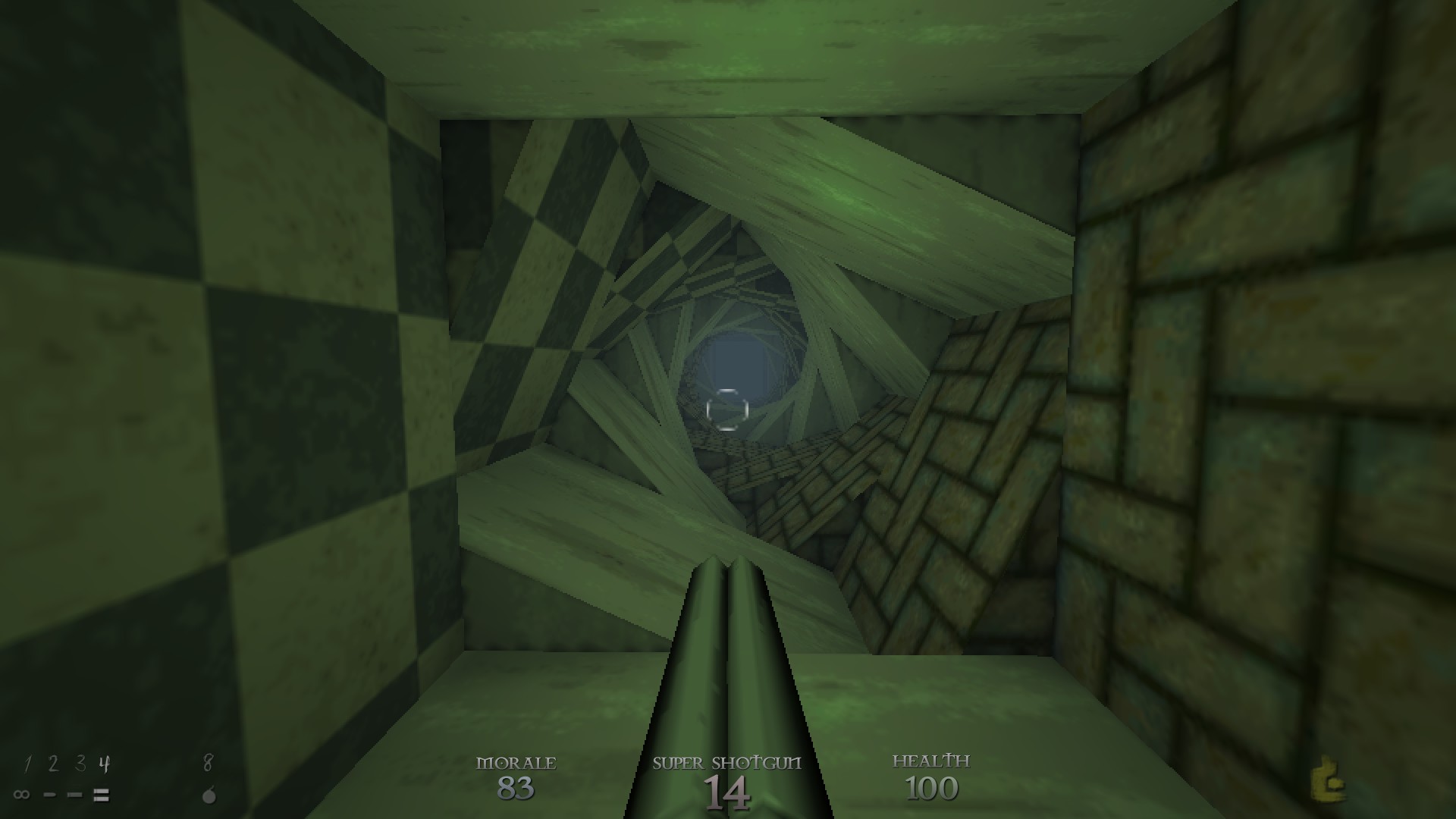
Mechanically, Dusk is mostly sound, but the shooting is also where Dusk’s main flaws are. There’s a curious solidity to your opponents that makes it feel like you’re shooting at a wall, which somewhat diminishes the game’s tactile satisfaction. I also don’t like how your weapons float in front of you. It’s a quirk you see in a lot of modern indie games, presumably due to the difficulties inherent in creating a physical player avatar. But given how heavily Dusk leans into the 90s visual style, the floating guns are an unsightly anachronism. Lastly, while Dusk’s weapon roster is mostly good, a couple of more exotic guns in the vein of Doom’s plasma rifle and BFG would have rounded the game’s arsenal off nicely.
Anyway, that’s enough about flaws. After the solid but unspectacular first episode, Dusk evolves into a truly magnificent beast. Titled 'The Facilities', episode two commences with a one-man raid on a truly enormous grainery, seeing you run through large, exposed areas as enemies rain hellfire down on you. Following this is a mission that involves navigating the internal workings of an enormous machine, with you wading through rivers of blood and crawling through vents lined with viscera as you avoid crushing pistons and spinning blade-traps.
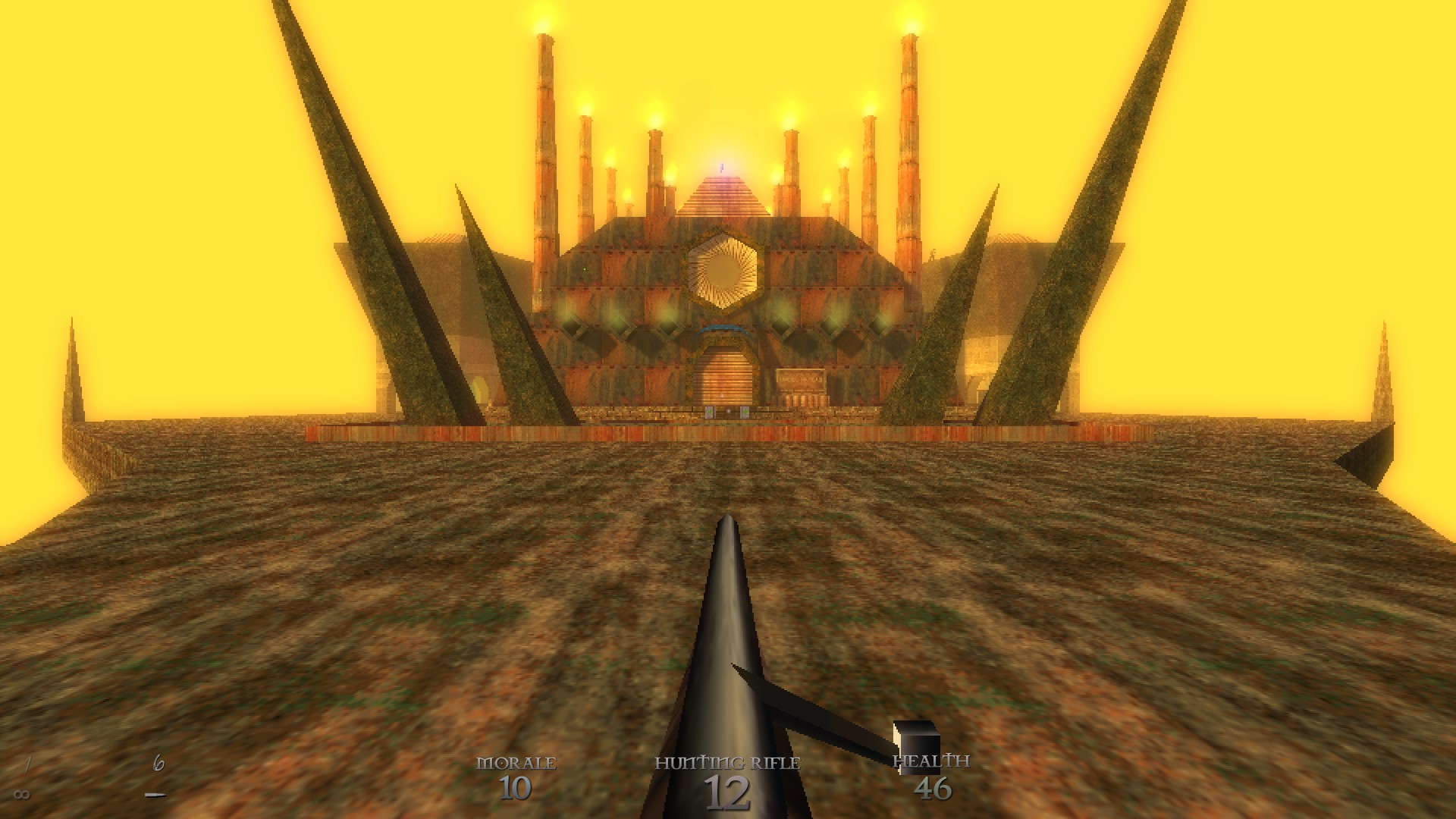
It’s here where Dusk takes an increasing turn for the surreal. One of the strongest levels in the game is Escher Labs, which blends the clean and orderly corridors of Half-Life with the spatial shenanigans of Thief’s iconic mission The Sword. Erebus Reactor, meanwhile is a gigantic arena battle that concludes with a truly breathtaking end-of-level reveal. After this you ascend to the spiky, cathedral-like structures of Neobabel, another fantastically designed space. All told, The Facilities is as wondrous as it is relentless, a showcase of what can be achieved with 3D geometry.
The Third Act is similarly impressive, starting off as a tribute to Hexen and Heretic and ending as a meta-commentary on Dusk’s own design. Early levels like the Iron Cathedral and City of Shadows are dazzling Gothic labyrinths that you carve your way through with a mightily powerful sword. Toward the end of the game, the level design starts to deliberately unravel, with levels like Homecoming playing with perspective in a way that I haven’t experienced since 2006’s Prey
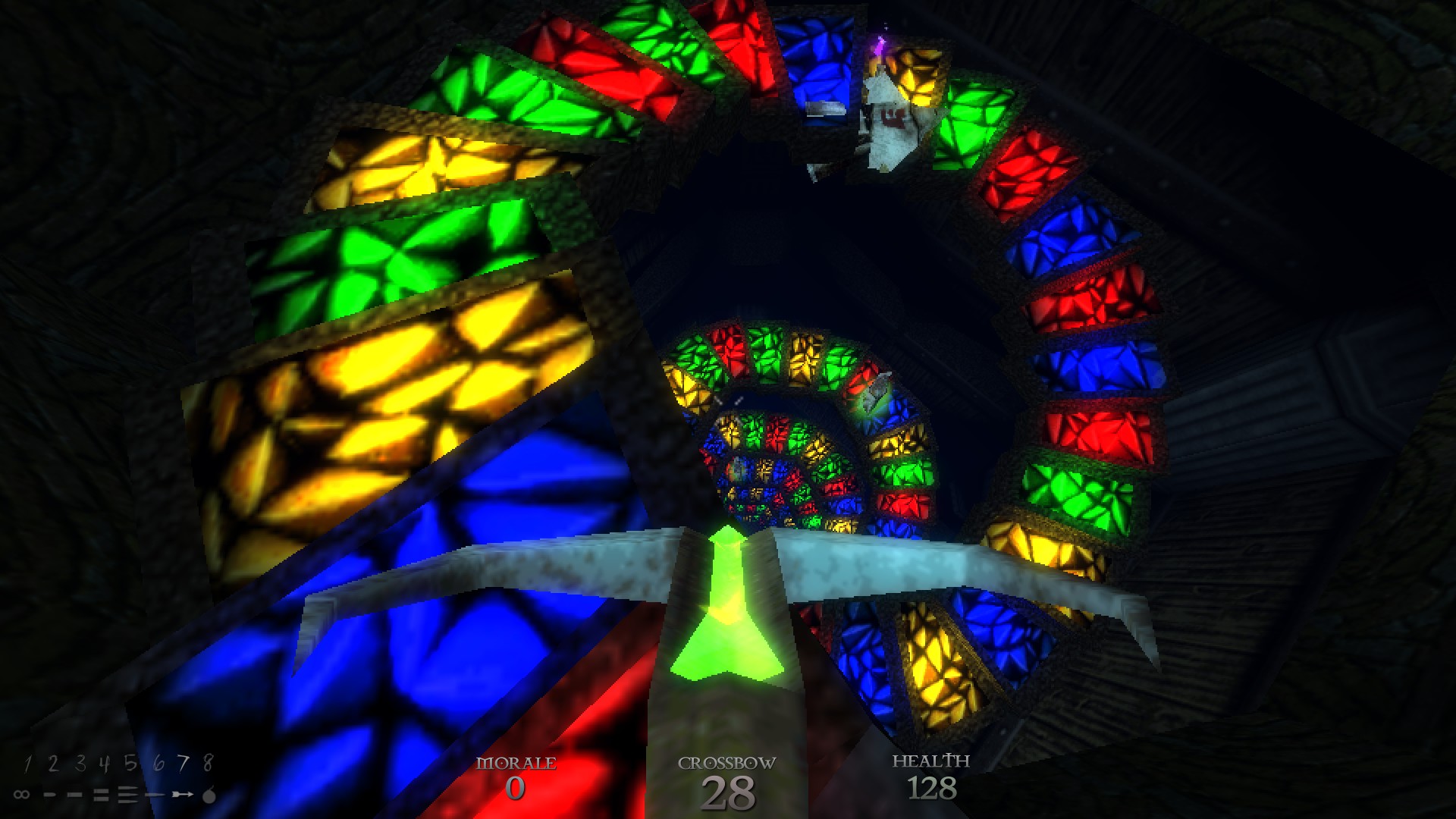
I’m aware that I’m making Dusk sound like a string of references to other shooters, and there are undoubtedly plenty of nods to those iconic games. But they are nods rather than wholesale borrowings, and Dusk cleverly threads them through the player’s journey, binding them up in its own visual themes. Dusk’s evolution is one from backwoods horror to body horror to cosmic horror, from scythes and scarecrows to industrial meat-grinders to interdimensional dreamscapes.
If Dusk had launched in the time it so fondly looks back on, I’m confident we’d be talking about it in the same terms as we do Doom and Quake. Hell, we’d probably be talking about it more enthusiastically, given how riotously paced and cleverly structured it is. It’s a good shooter too, maybe even a great shooter. But mainly it serves as an essential reminder of how 3D space can be used to build more than open worlds.
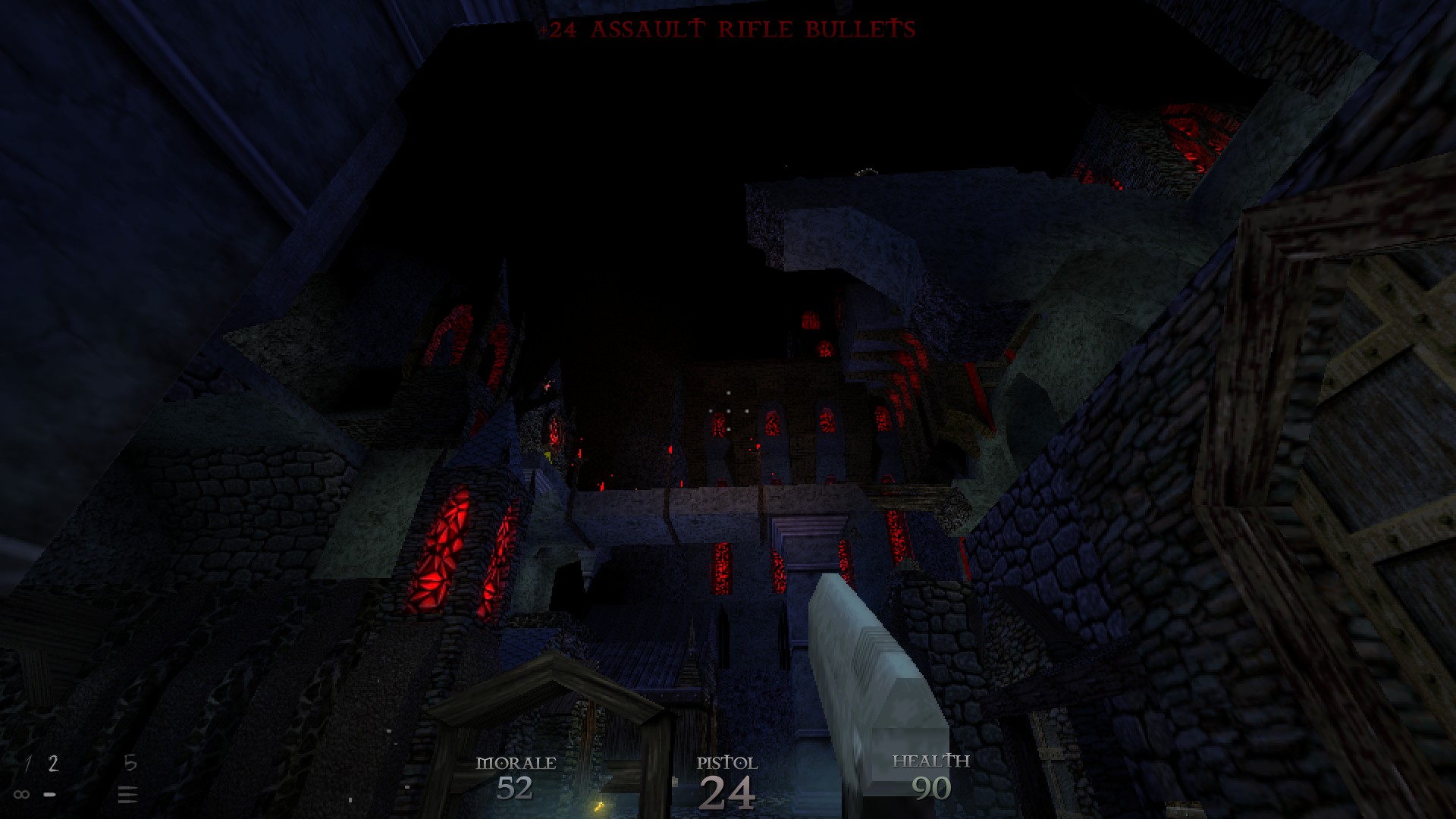


MSI MPG Velox 100R Chassis Review
October 14 2021 | 15:04

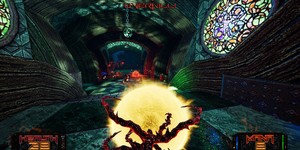
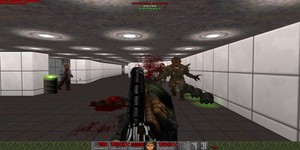






Want to comment? Please log in.